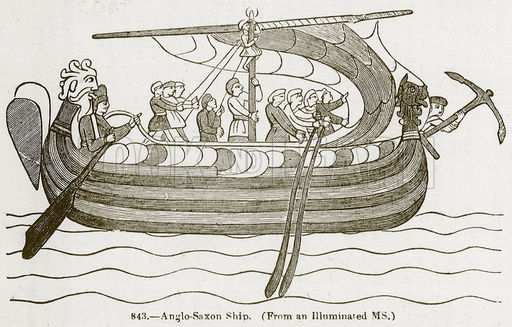In 1066, Harold of England put the Saxon fleet to sea to deter an assault from Norway or Normandy against England. However, when harvest-time came, the sailors went home to their fields and the way was open for the invasions that doomed Anglo-Saxon England.
What if Harold kept the fleet at sea somehow? Perhaps he recruits a good labour force to look after the sailors’ crops so that they can keep patrolling without letting their harvest go to waste. How long would the Saxon fleet need to keep patrolling the Channel before Harald Haardrada of Norway and William the Conqueror get tired of waiting and either attack or give up?
In fact, the English Navy was damaged by a storm on September 12th – the same storm that thwarted William’s ORIGINAL invasion. The Norman fleet was forced into harbour at St Valery from its original launch point at the mouth of the River Dives (between Caen and Lisieux).
The gale came at the end of a protracted period of northerly wind lasting from mid-August. The storm wasn’t that bad and wouldn’t have bothered the Norwegians but the Normans were much less experienced sailors and their “fleet” was little more than a series of wooden barges – the comparison is often made with the proposed German landing-craft of 1940.
In effect, without a favourable (and light) southerly wind, there was little chance of the Norman fleet getting to England in one piece. The “miracle” for William was that he got the weather on September 27th and got the bulk of his fleet across within the day.
For me, the interesting ‘what if’ is not to have the Norman fleet destroyed by the weather but to have no bad weather and an opposed Norman landing on or about September 14th. This would have left Harold to face the Normans first – Hardrada did not land until September 17th. These few days could have made all the difference.
In the timeline I presented before, the Normans are defeated at Netherfield (near Hastings) on September 19th after which Harold rides north to face Hardrada and Tostig south of York.
I’d heard that if Harald Hardraada had won in the north and come down to face William the Conqueror in the south of England, it is likely that the country would be partitioned.
I’m not sure what the outcome would be if they fought; Harald would have been weakened by the battle with the English under Harald, but as a fellow Scandinavian (England at the time was more Norse than Continental and there were many prominent Danes there), he could also recruit Englishmen to resist William.
In essence, Harold defeats William at Netherfield, just to the north of Hastings and William dies soon after the battle. The Normans withdraw under Count Eustace of Boulogne in disorder.
From the south, Harold leads the victorious fyrd north and defeats Hardrada and Tostig at Stamford Bridge on September 26th. Inside two and a half weeks, Harold has seen off two foreign invasions and is feted across England.
Normandy dissolves into anarchy as William’s son, Robert, tries to keep the Duchy together. Harold is after revenge and makes an alliance with Philip of France and the two eventually conquer Normandy in 1068. William’s widow, Matilda, returns to Flanders and gets her brother, Robert, to overthrow Count Baldwin in 1070 (as in Original Time Line OTL). This draws Harold into a protracted involvement in Europe (Flanders was England’s leading trading partner). Ultimately, Harold allies with Henry, the Emperor and the combined forces defeat the army of Flanders in 1079. The alliance with Harold enables Henry to assert dominance over the Pope and this will fundamentally affect the future development of the Empire and the map of Central Europe.
Elsewhere, Edgar the Aetheling flees to Scotland and joins forces with Malcolm, whose son marries Edgar’s older sister. In 1072, they persuade Earl Edwin to lead a rising in the north and invade. Harold has to rush the army north and at Newark an inconclusive battle leads to the invasion being halted but Harold giving up Northumberland and Westmoreland in exchange for homage from Malcolm III. Edgar later plots with the Danes but this comes to nothing.
While he lives, Harold the Great holds England together but the Godwin dynasty has many elements and after Edgar’s revolt, Harold tends to trust his immediate family more than the extended Godwin clan. His son, Harold Haroldson, will become king in 1091 but tension exists with his younger brother, Wulfnoth….
